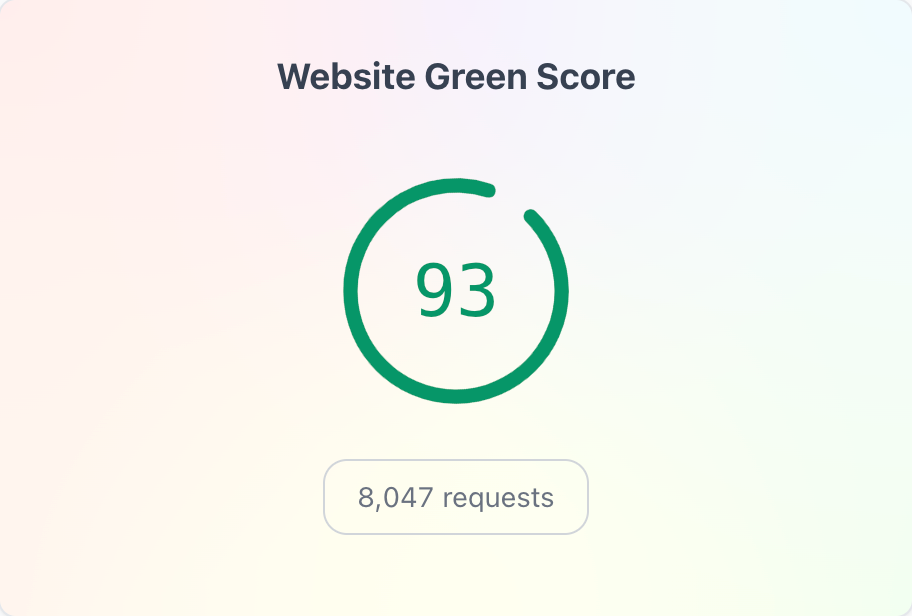Green Score
The Green Score is a holistic metric that provides an overall measure of a website's environmental impact. It combines three key metrics: Emission Per Page (EPP), Cache Ratio (CR), and Renewable Hosting Ratio (RHR). Each of these metrics is assigned a specific weight based on its relative importance in the overall score.


How the Green Score is calculated
The Green Score is calculated using a detailed process that takes into account the values and weights of each of the three metrics.
-
Emission Per Page (EPP)): This metric measures the amount of carbon dioxide equivalent (CO2e) emissions produced by a single page load on a website. It has a weight of 0.55 in the Green Score calculation.
-
Cache Ratio (CR): This metric quantifies the percentage of requests served from the cache when a webpage is loaded. It has a weight of 0.1 in the Green Score calculation.
-
Renewable Hosting Ratio (RHR): This metric measures the percentage of data transferred from servers powered by renewable energy sources when a webpage is loaded. It has a weight of 0.35 in the Green Score calculation.
The values of these metrics are normalized and multiplied by their respective weights. The sum of these values gives us the Green Score.
How the scores are determined
| Metric | Weight | Score of 50 | Score of 90 |
|---|---|---|---|
| Emission Per Page (EPP) | 0.55 | 2g | 1g |
| Cache Ratio (CR) | 0.1 | 15% | 25% |
| Renewable Hosting Ratio (RHR) | 0.35 | 75% | 90% |
These weights reflect the relative importance of each metric in the overall Green Score. The EPP has the highest weight, indicating that it has the most significant impact on the Green Score. The RHR also has a substantial weight, while the CR has the lowest weight.
How the scores are color-coded?
The Green Score and the individual Green Web Vitals are colored like so:
- 0 to 49 (red): Poor
- 50 to 89 (orange): Needs Improvement
- 90 to 100 (green): Good
The Importance of the Green Score
The Green Score is a powerful tool for understanding and reducing the environmental impact of a website. By combining key metrics related to carbon emissions, caching, and renewable hosting, it provides a comprehensive measure of a website's sustainability.
A higher Green Score indicates a more environmentally friendly website. By understanding how the Green Score is calculated, website owners can identify areas for improvement and take steps to make their websites greener. This not only contributes to a more sustainable web but also enhances the user experience by improving website performance.